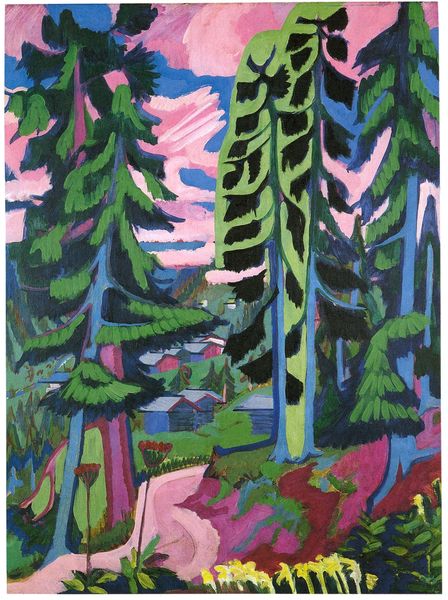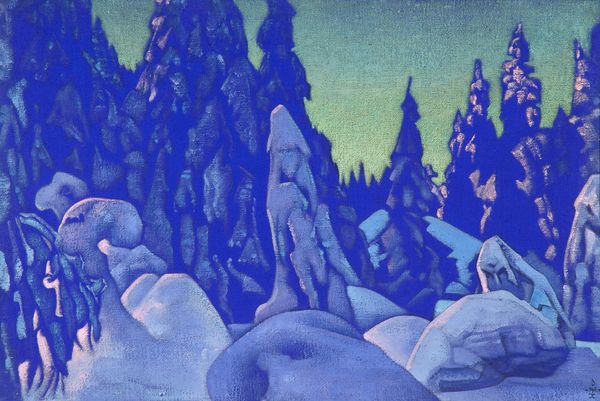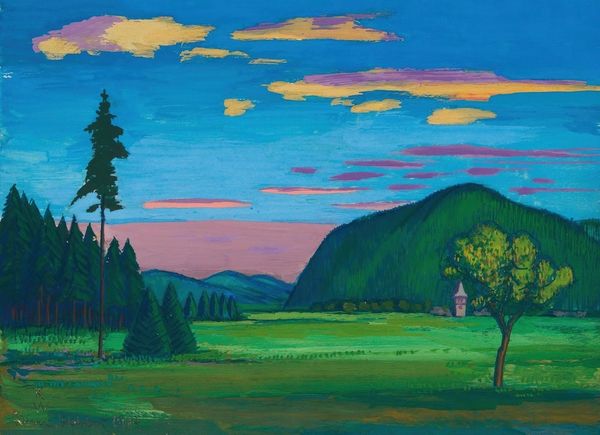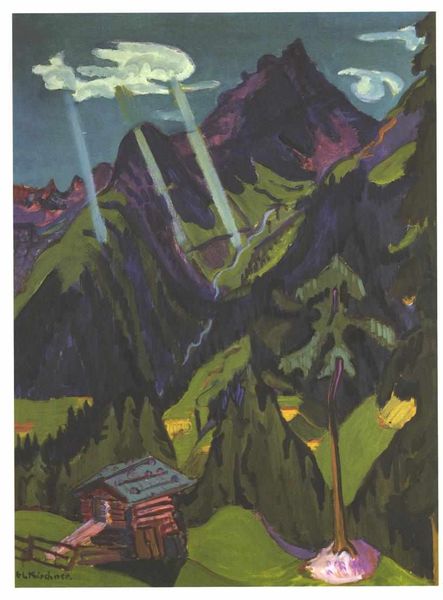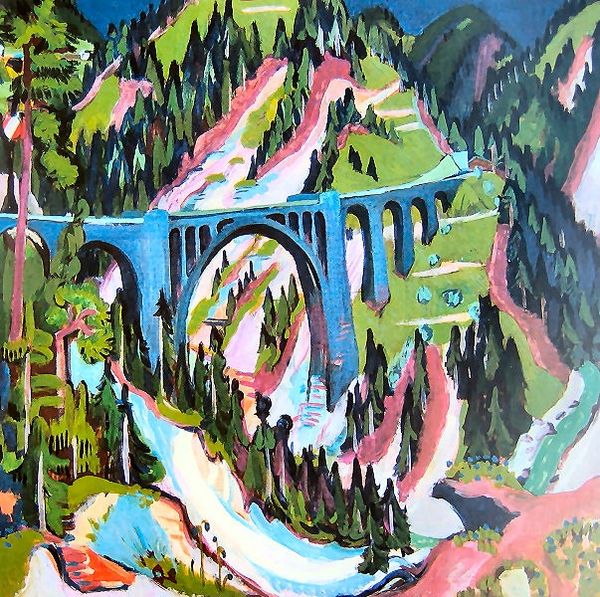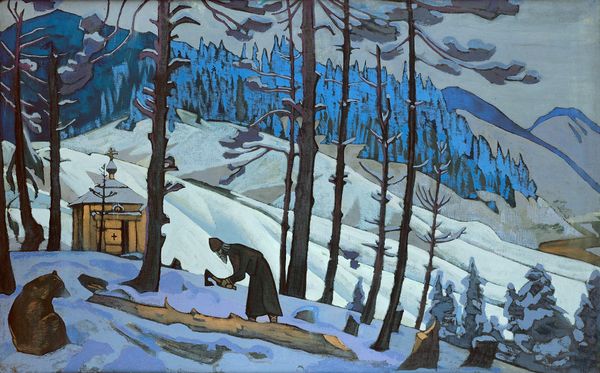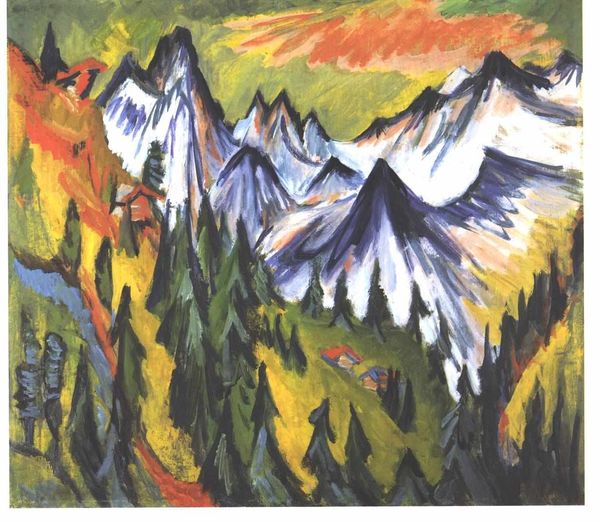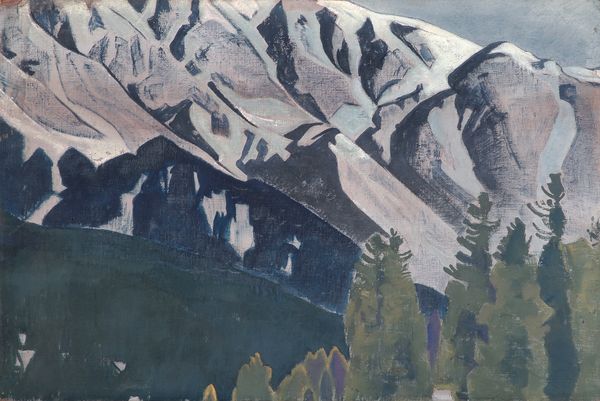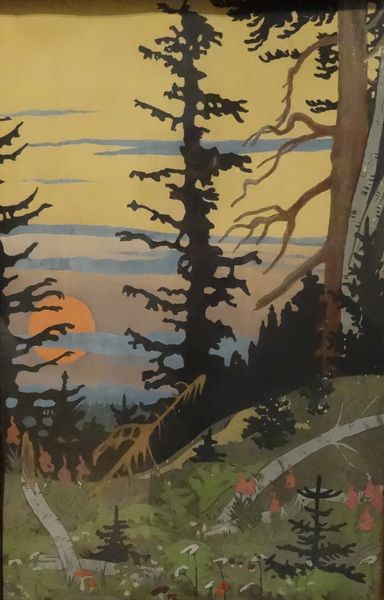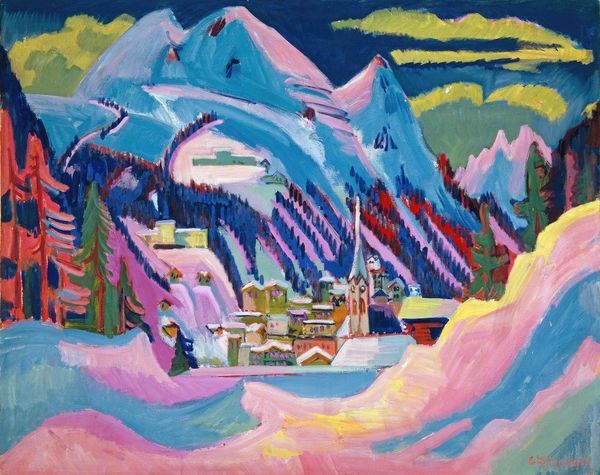
Dimensions: 120 x 120 cm
Copyright: Public domain
Editor: This is Ernst Ludwig Kirchner's "Sertigweg," painted in 1926 using oil paint. The vibrant, almost jarring colors of the mountains and forest create a striking, somewhat unsettling landscape. What compositional elements stand out to you? Curator: The composition’s dynamism is achieved through the juxtaposition of near-abstracted forms. Note how Kirchner abandons traditional perspective. Instead, the foreground path aggressively ascends, intersecting with the tumultuous waterfall represented with frenetic brushstrokes. Editor: I see what you mean about the path. It’s almost violently pink and steep, completely flattening the space. Can you tell me more about this flatness? Curator: The artist forsakes illusionistic depth for a deliberately compressed picture plane. This is accentuated by the bold, non-naturalistic use of color. Ask yourself: what does this defiance of spatial convention communicate? The intense hues serve to heighten the emotional impact. The almost arbitrary allocation of color to discrete components reveals a construction, not a replication, of experience. Editor: So, the emotional impact isn’t necessarily about conveying the specific emotions *of* the landscape, but of an emotional experience in general? Curator: Precisely. The visual elements function as signs, referring not to objective reality, but to a subjective interpretation. The jagged brushstrokes and clashing colors combine to generate an environment rife with anxiety and psychic turmoil, a hallmark of expressionist technique. Editor: Looking closely, I can definitely feel that tension now, the painting is unsettling in a way that is separate from what it represents. Thank you! Curator: A fruitful discussion! I am gratified you came to this understanding of Kirchner's process of formal invention and expressive ambition.
Comments
No comments
Be the first to comment and join the conversation on the ultimate creative platform.

